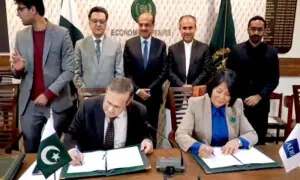Bankrupt Sri Lanka hikes power prices again for IMF deal
COLOMBO: Sri Lanka’s electricity board hiked consumer rates by up to 275 percent, officials said Thursday, the second steep increase in months as the bankrupt island nation works to secure an IMF bailout.
An unprecedented financial crisis last year saw Sri Lanka’s 22 million people suffer through months of food and fuel shortages, along with lengthy power cuts.
The government defaulted on its $46 billion foreign debt and is finalising a rescue package with the International Monetary Fund to restore its ruined finances.
“We had to raise electricity charges to be in line with IMF conditions that we cannot get handouts from the treasury,” energy minister Kanchana Wijesekera told reporters.
“We need to generate revenues to cover our costs.”
Households will now pay at least 30 rupees (eight cents) per kilowatt-hour for electricity, a figure in line with average tariffs in neighbouring India.
The 275 percent increase in the lowest tariff follows a 264 percent hike that came into effect six months ago.
Larger consumers have had their rates hiked by 60 percent following an 80 percent hike in August.
Wijesekera said the rate hikes would allow Sri Lanka’s state electricity monopoly to end the 140-minute daily blackouts currently in force around the island.
“With increased revenue, we will be able to buy the fuel necessary to ensure uninterrupted power from today,” he said.
Sri Lanka faced daily blackouts of up to 13 hours last year as utilities ran out of money to buy imported fuel for generators.
Months of protests at the peak of the crisis saw then-president Gotabaya Rajapaksa forced to flee the country in July and step down after allegations of economic mismanagement and corruption.
His successor, Ranil Wickremesinghe, has negotiated with international creditors and imposed tax hikes to smooth passage of the IMF bailout.
Wickremesinghe said Sri Lanka’s economy contracted by up to 11 percent last year and that the country would likely remain in bankruptcy until at least 2026.
The UN children’s agency said this month that nearly one in three Sri Lankans were in need of humanitarian assistance due to the impact of the crisis.
For the latest news, follow us on Twitter @Aaj_Urdu. We are also on Facebook, Instagram and YouTube.





















Comments are closed on this story.